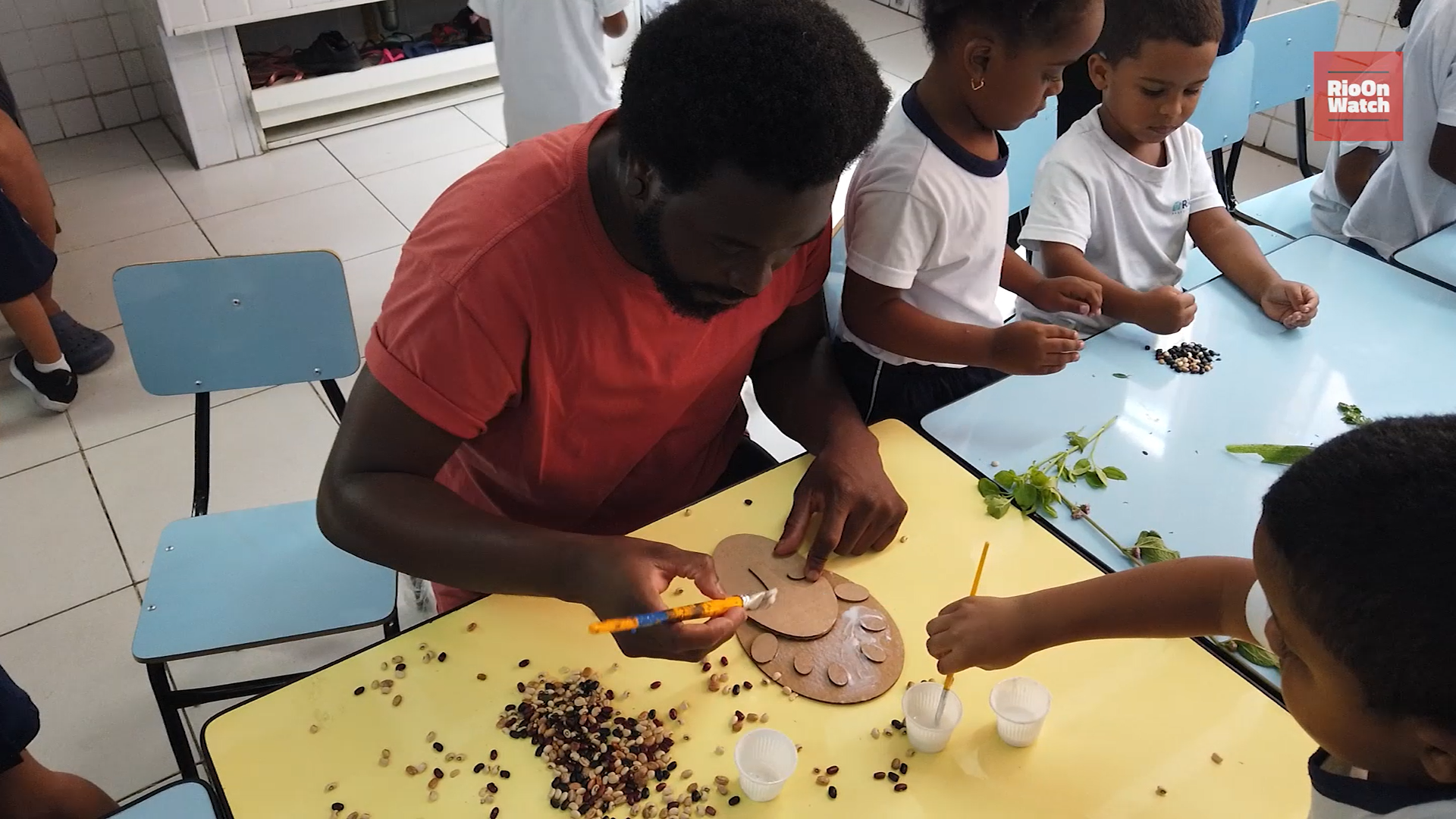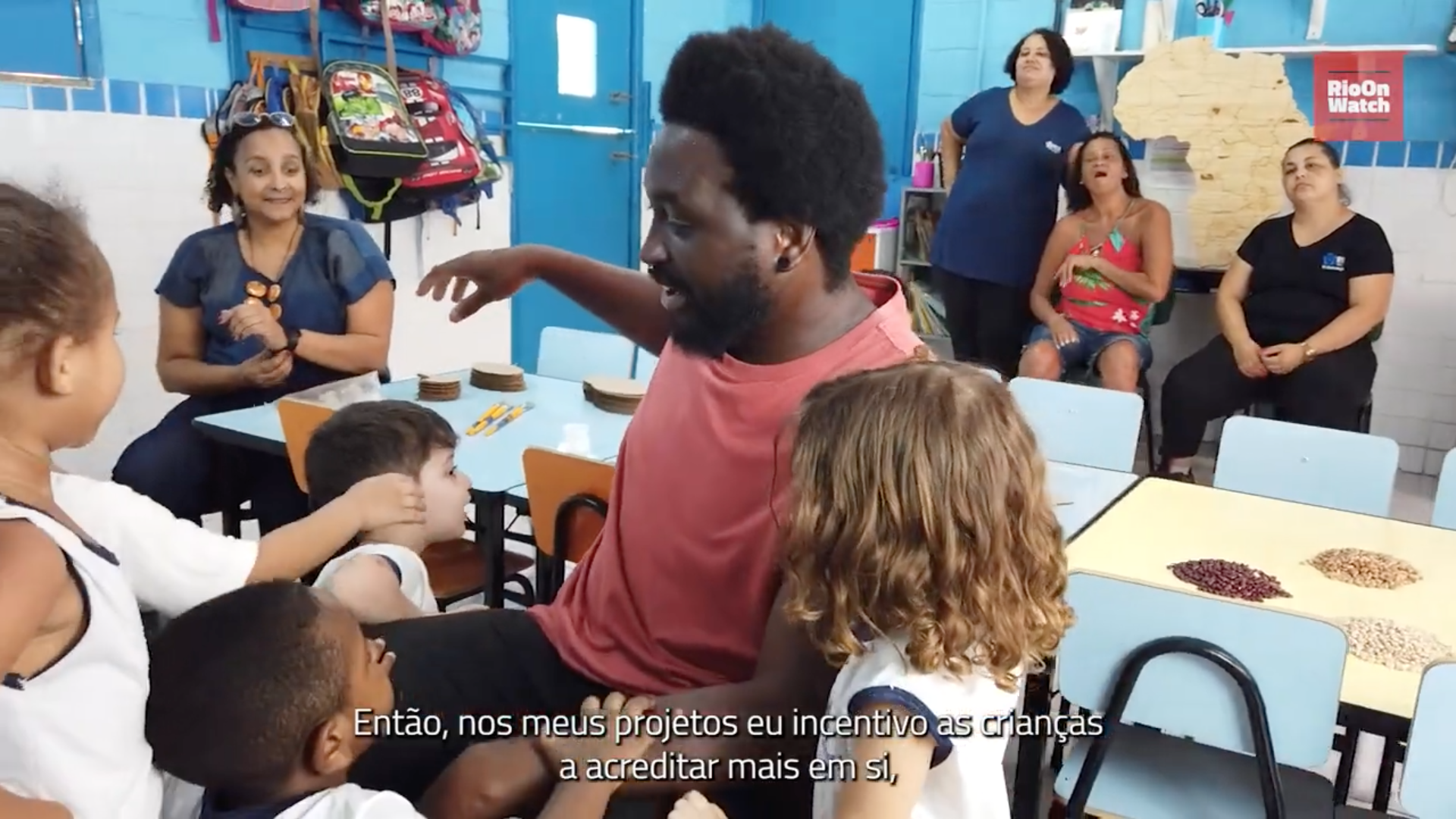This video tells the story of Sèmanou Lionel, 35, an immigrant to Brazil from Benin in West Africa. Lionel is an artist, photographer, and cameraman who has lived in Brazil since 2011. He studied Arts and Culture and graduated from the Pontifical Catholic University of Rio de Janeiro (PUC-RIO) with a degree in Visual Communication and Design. He founded the ‘Agudás: The Path to Africa’ project which primarily works with children in public schools in Rio de Janeiro’s favelas.
The Agudás project was created by artist Sèmanou Lionel to be carried out as a workshop offered to students at the Margarida Gabinal Municipal Day Care in City of God in Rio’s West Zone. During the workshop, participants sow emotions as they produce African masks and prints while learning about the ancestry and cultures of the mother continent. “Agudá” is a term with many layers of meaning. One version says it originated “in a transformation of Ajudá, the Portuguese name given to the city of Ouidah in Benin. This city has great symbolism as the departure point for enslaved peoples from Benin to the rest of the world, including Brazil,” explains Lionel. “Agudá” is also the name given to the community of African and Afro-Brazilian returnees, those who suffered slavery in Brazil and, when it was possible, returned to Benin as free people. And there’s a final layer of meaning in the project name, as “Agudá” comes from the word ajuda—Portuguese for help and something the artist and educator has received much of and intends to give to many others.
“I have to repay [the help I have received]. I have to go to schools where people don’t have the opportunity of having Black role models. This is my duty, going into schools and sharing knowledge… Because children are innocent and receive a lot of information. If they receive the right information, this can change the world!” — Sèmanou Lionel
Lionel uses various media in his work including woodcut, a technique based on engraving designs into pieces of wood to use as a print stamp, covering it with ink, and reproducing the image on paper or fabric; painting and serigraphy, also known as silk-screen or screen printing, which is a printing process using a stencil with ink forced through a fine screen to the material underneath. Lionel uses these techniques to express in images the story of the social reality of African youth, stripped of resources, but that strives with what they do have to establish a place in the world through art, recovering memories. In his art and social projects, Lionel seeks to demonstrate that Benin and Brazil are intimately linked.
Lionel’s initiative falls under Law 10.639/03, amended by Law 11.645/08, which makes teaching African and Afro-Brazilian culture and history mandatory in all schools, public and private. With this in mind, Lionel already offers this experience to many students in public schools, mainly in schools located in favelas. He carries out various activities mandated by the law, while the state itself rarely does.
“I believe my work can contribute to understanding other realities.” — Sèmanou Lionel
Watch the Video with English Subtitles Here.

About the author: Amanda Botelho, 26, is a journalist with a postgraduate degree in Social Media. Born and raised in Morro da Formiga in Tijuca in Rio’s North Zone, she started out in community media as a reporter with Voz das Comunidades. She currently works as a freelancer for Canal Futura and has had work featured on Rio TV Câmara and Fiocruz.
About the video editor: Guilherme Oliveira, 20, has a degree in Marketing and has worked as a cameraman since the age of 14. Born and raised in Alto da Boa Vista in Rio’s North Zone, he got involved in film through the Our Forest Film Culture Point and has recently been featured in Voz das Comunidades. He currently works in the Rio de Janeiro Municipal Education Secretariat (SME).

